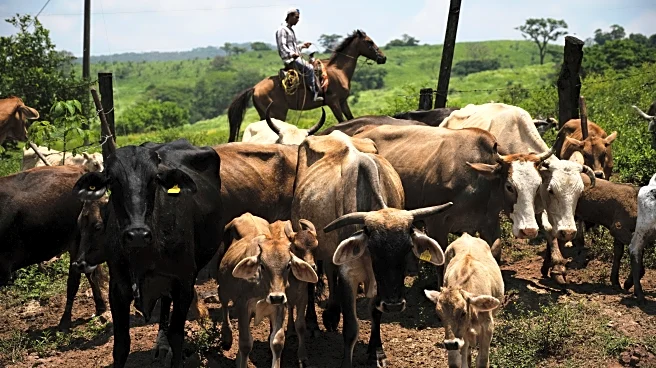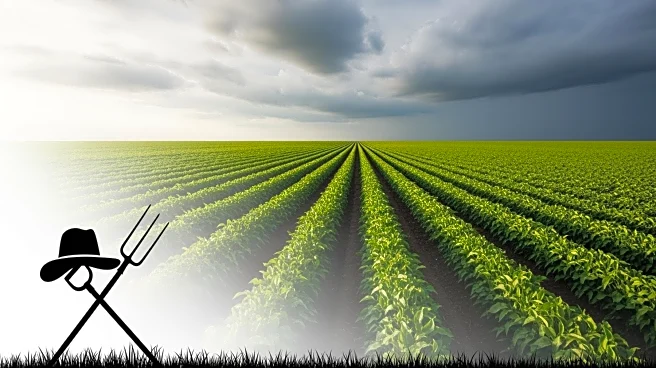What's Happening?
The USDA has released a report detailing the economic losses and safety net payments for nine major crops in the United States for the 2024 harvest. The report highlights that the collective economic loss for these
crops was nearly $30 billion, with corn and soybeans experiencing the largest losses. The USDA's Economic Research Service calculated the economic cost of production, which includes opportunity costs for unpaid family labor and owned land and equipment. The report also discusses the role of ad hoc assistance programs, such as the Emergency Commodity Assistance Program and the Supplemental Disaster Relief Program, which were authorized in December 2024. These programs, along with standing programs like crop insurance and commodity programs, are estimated to reduce the collective economic loss from 17% to slightly more than 3% of total economic cost.
Why It's Important?
The report underscores the significant impact of government assistance on mitigating economic losses in the agricultural sector. By reducing the collective economic loss from $30 billion to $5.7 billion, these safety net payments play a crucial role in stabilizing the sector. This assistance helps prevent declines in input prices, including cropland rent, and supports farmers in managing their financial obligations. The wide variation in coverage of economic loss by crop raises questions about the fairness and effectiveness of contemporary ad hoc assistance. The findings suggest that timely assistance is becoming the norm, which could influence future policy decisions regarding the timing and amount of government support for agriculture.
What's Next?
The report suggests potential policy changes to improve the timing of standing crop safety net program payments. By moving these payments closer to harvest, farmers could benefit from more informed determinations of the need for ad hoc assistance. This change could be achieved by using harvest cash prices instead of market year prices to determine payments, which would require recalibrating reference prices. Additionally, the USDA's Risk Management Agency may need to assess the statistical accuracy of setting county yields earlier, given the increased use of county add-up products. These changes could enhance the effectiveness of government assistance and support the financial stability of the agricultural sector.
Beyond the Headlines
The report highlights the ethical and fairness issues associated with the varying coverage of economic losses by crop. The reliance on contemporary ad hoc assistance raises questions about the adequacy and equity of government support. The findings suggest a need for more consistent and transparent criteria for determining assistance levels, which could address disparities and ensure that all farmers receive fair support. Additionally, the report points to the importance of considering long-term economic health in the agricultural sector, beyond immediate cash costs, to ensure sustainable farming practices.












